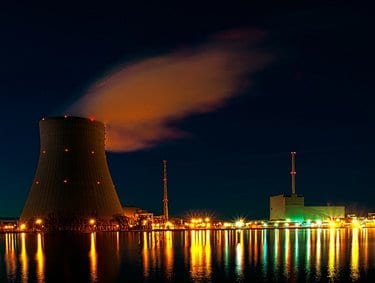The globe’s nuclear power industry is aging, plagued with high costs and construction delays, and generally on the decline.
That’s the conclusion of the World Nuclear Industry Status Report released Tuesday, an annual assessment of the trends in nuclear power production and the state of nuclear reactors worldwide.

While nuclear power is seen by some of the most prominent climate scientists in the U.S. as a necessary means of reducing greenhouse gas emissions from electricity generation to combat climate change, most growth in low-carbon electricity generation is in wind and solar.
The World Nuclear Industry Status Report, written by independent consultants in London and Paris with support from the German Green Partyand the anti-nuclear Rocky Mountain Institute based in Colorado, shows that nuclear power’s share in global energy production declined to 10.8 percent in 2013, down from 17.6 percent at its peak in 1996.
“The industry has been in decline for a long time. It’s nothing new,” report lead author Mycle Schneider told Climate Central on Wednesday. “For the production of nuclear electricity, peak was reached in 2006. For the number of nuclear reactors, peak was reached in 2002. For the share of nuclear power in global electricity generation, (peak) was reached in the middle of the 1990s. We’re talking about a 20-year decline of the role of nuclear power.”
The U.S. Energy Information Administration doesn’t see nuclear power generation either growing or declining much in the next 25 years.
The EIA’s latest projections show nuclear power production remaining relatively flat through 2040, growing by 0.2 percent each year. Nuclear reactors provide about 20 percent of total U.S electricity generation.
The industry, whose reactors average 28.5 years old, is trying to expand, but construction is fraught with delays, the report says. Of the 69 reactors being built worldwide, at least 49 of them, mostly in China, have encountered construction delays, some longer than a year.But the new report paints a grim picture of the nuclear industry globally.
Nuclear power plant operating costs are also increasing, with nuclear power generating costs jumping 16 percent over the last three years in France. Five U.S. nuclear reactors in Vermont, California, Wisconsin and Florida have been or are scheduled to be shut down in part because of high operating costs, the report says, with 38 other U.S. nuclear reactors in danger of closure for economic reasons.
Nuclear plant operating costs have increased worldwide to shore up reactors considered at risk following the Fukushima Daiichi disaster after the 2011 tsunami in Japan, according to the report.
Meanwhile, solar and wind power, meanwhile, continue to gain on fossil fuels and traditional power sources.
China had more solar power capacity installed — 18 gigawatts — than nuclear power capacity in 2013, while Spain generated more power from wind than any other source, marking the first time in history that wind has become the largest source of electricity over the course of a year for any country, the report says.
The nuclear power industry is assailing the report as biased against it and overly pessimistic about nuclear’s future in a changing climate.

David Hess, an analyst with the London-based World Nuclear Association, a lobbying group, told Climate Central that he expects nuclear power to grow in Asia in the coming years, primarily in China, India, Russia and South Korea.
Nuclear power is essential if the world wants to get serious about addressing climate change and reducing carbon dioxide emissions, Hess said.
Thomas Kauffman, spokesman for the Nuclear Energy Institute, an industry lobbying group, in Washington, D.C., said more nuclear reactors are under construction today than at any point since 1989, including five in the U.S., while U.S. nuclear power production has increased this year.
“Does that sound like an industry in decline?” Kauffman told Climate Central. “Of the 30 countries that already use nuclear power, all but a handful are either building new reactors or planning to build new ones. We encourage Mr. Schneider to continue his tally in the years to come, so he can document the world’s increased use of energy to generate reliable, affordable, carbon-free electricity.”
Schneider said one of the best ways to reduce greenhouse gas emissions from electricity generation isn’t to build new nuclear reactors, but to make buildings more energy efficient.
“It’s the lowest-hanging fruit there is,” he said.
Source: Climate Central. Reproduced with permission.







